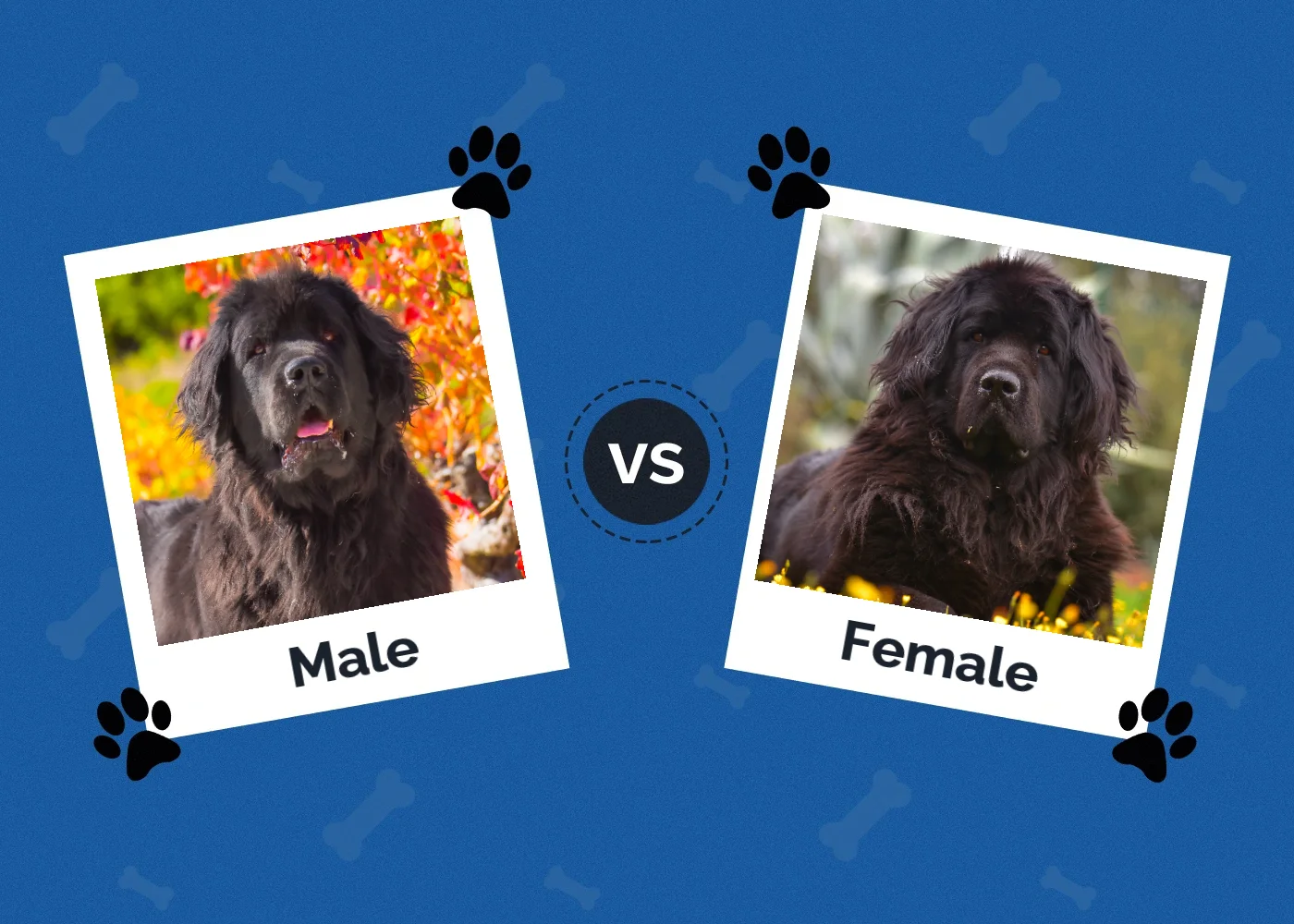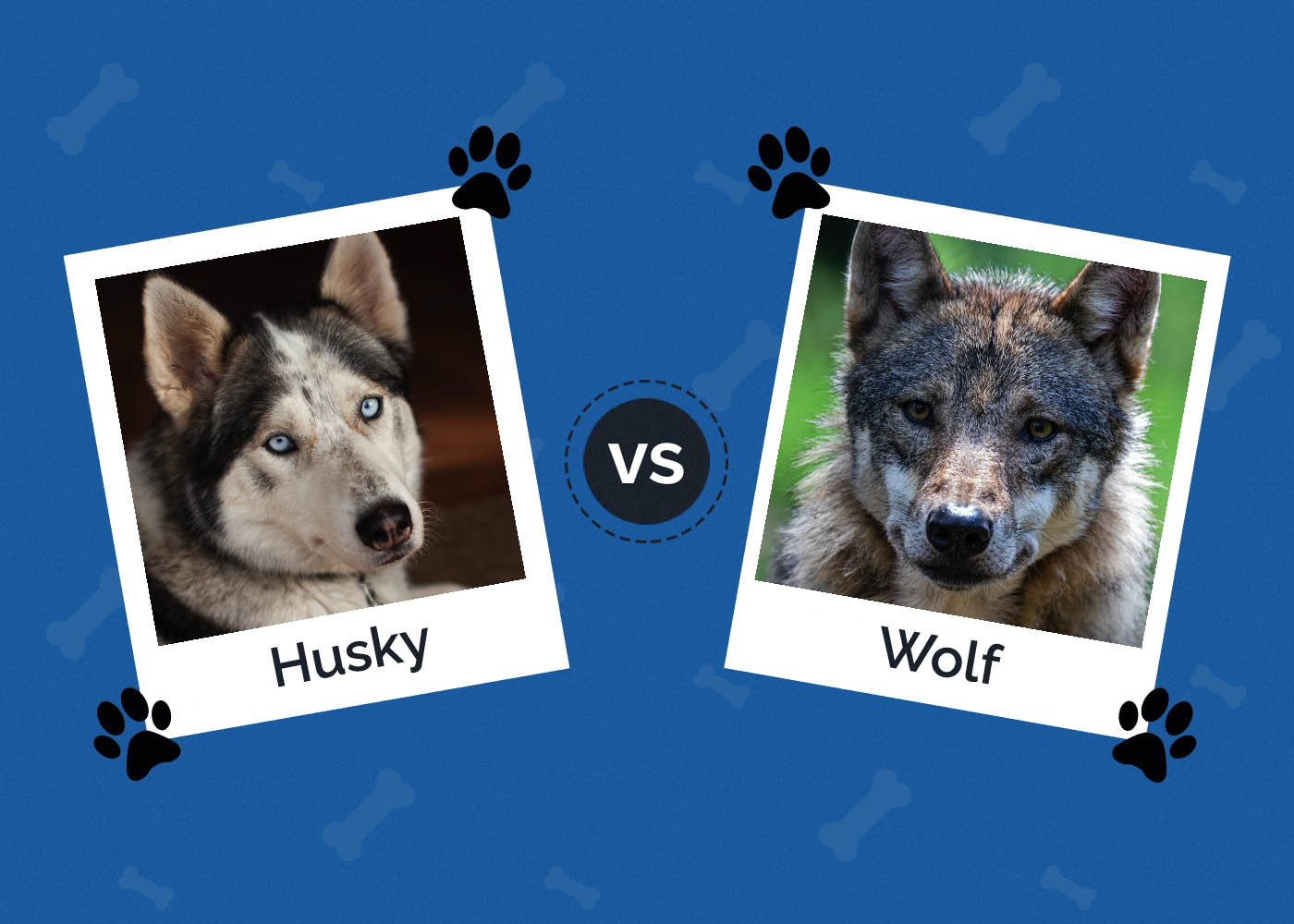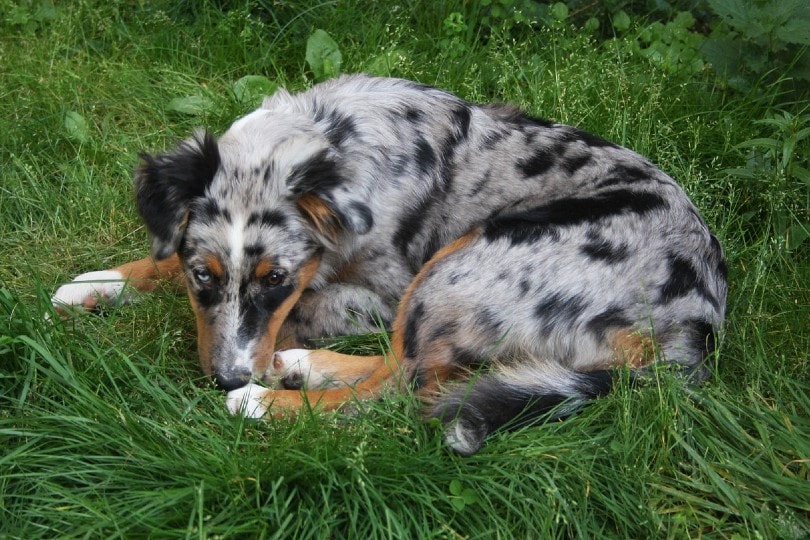Why Do Dogs Bark at the Vacuum? 5 Vet-Reviewed Reasons & Tips to Stop It
Updated on
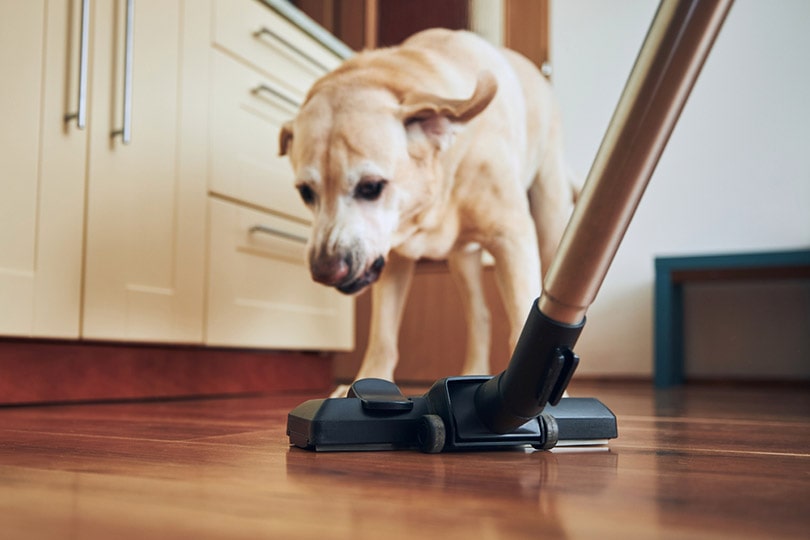
Vacuuming is part of regular cleaning, but many dogs have negative feelings about vacuum cleaners. Some dogs run and hide under the bed, while others see the vacuum as a threat to bark at and chase. Why do dogs hate the vacuum so much?
Since dogs don’t have the reasoning capacity to understand that a vacuum is harmless, they use their instincts to respond. Vacuums are big, noisy machines that seem threatening. When dogs are faced with something of that nature, they respond in one of two ways: They exhibit aggressive behavior by barking and lunging, or they retreat by hiding.
Let’s look more in-depth at why dogs bark at the vacuum and provide ways to stop the behavior.
The Top 5 Reasons Why Dogs Bark at Vacuums
1. Fear
- Response Type: Aggressive
A dog’s genetic makeup predisposes them to have a certain personality type. Some dogs are submissive, while others are more dominant. How dogs react to fear is determined in part by their personality. The personality of a dog is the result of their temperament and their experience with environmental factors.
The fear response in dogs results in retreating and hiding behavior or elicits an aggressive response based on their instinct to defend themselves. To be clear, in this scenario, barking is considered an aggressive behavior because the purpose of barking is to scare off or drive away the thing/person/animal being barked at. This is in direct opposition to hiding, which is a submissive act.
If your dog barks at the vacuum, it’s possible that they are doing so out of fear. Their instincts tell them that the vacuum is a threat to them in some way, so they bark to “scare” the vacuum back and, hopefully, make it disappear.
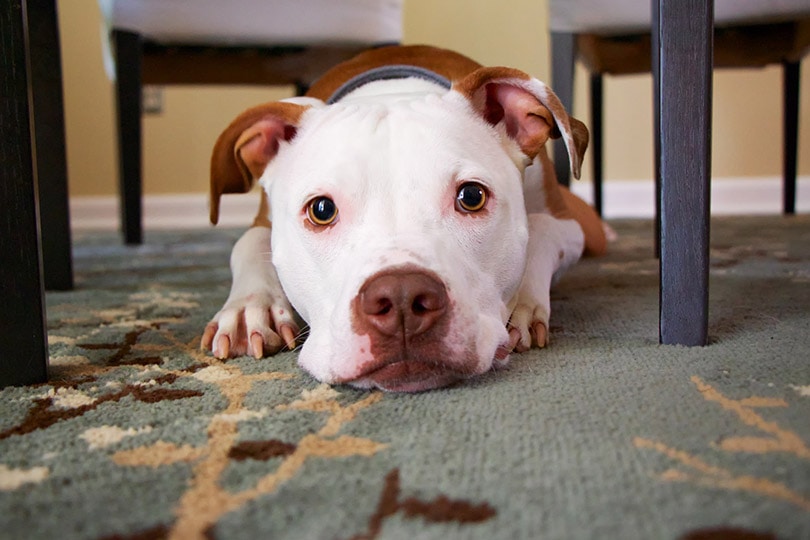
2. Lack of Desensitization
- Response Type: Aggressive
The environment that your dog lived in as a puppy significantly impacts their responses to certain stimuli as an adult. Puppies go through several critical stages where they either become comfortable with bizarre objects and situations or learn to fear them. The vacuum is one example of a bizarre object.
Pups that were frequently exposed to novel stimuli like vacuums at a young age learn that there is nothing to fear from them. In a perfect situation, your dog would have been exposed to the noise of the vacuum at the appropriate time in their development. Unfortunately, not all dogs get this opportunity. If your dog is seeing and hearing a vacuum for the first time as an adult, they likely see it as a predator. A step-by-step desensitization plan based on positive reinforcement methods can help the dog learn that the vacuum is not a predator, as invasive as it appears to be.
3. Herding Behavior
- Response Type: Genetic instinct
Dogs that belong to certain breeds have a genetic predisposition to herding behavior. Dogs like Border Collies, Heelers, Australian Shepherds, and Sheepdogs often chase vacuums and other objects because they are hardwired to “herd.”
Herding dogs like moving things to be organized and in their place. The behavior isn’t specific to vacuums; these dogs will also herd children, bikers, cars, and of course, livestock. If you have a herding breed that barks at the vacuum, they may just be trying to round it up!
While the behavior is irritating, there’s not much that you can do about it. It’s up to you as a dog owner to be in control of your dog’s herding instincts.
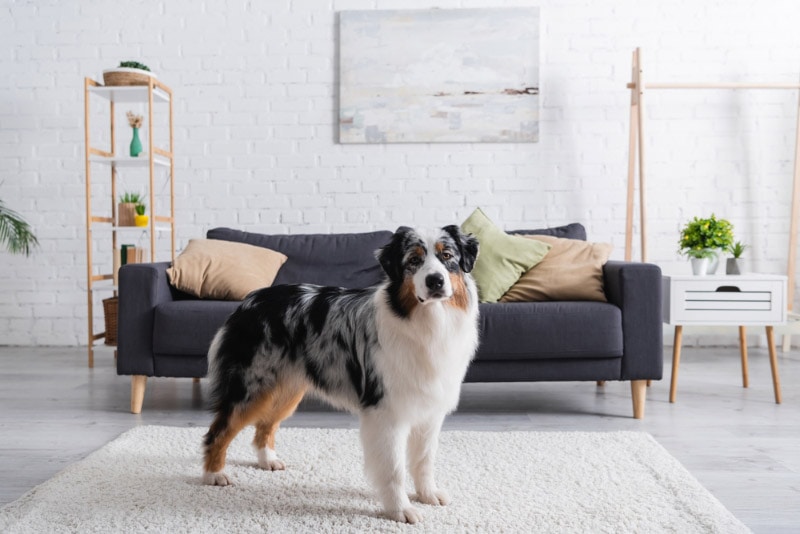
4. Prey Drive
- Response Type: Genetic instinct
Vacuums make motions that resemble a “charge and retreat” action made by a predator and its prey in the heat of a battle. To your dog, the vacuum is a foreign invader that enters their territory and often chases them out of their favorite spots. The invader even has the audacity to steal things off the floor or move the furniture around.
Unfortunately, your dog doesn’t understand that you’re trying to tidy the house or that the crumbs on the kitchen floor aren’t for them. They bark at the vacuum to “kill” it or to drive it out of their territory.
5. Reinforced Behavior
- Response Type: Learned behavior
It might surprise you to know that you could be the driving force behind your dog barking at the vacuum. After all, sometimes watching your dog bark and chase the vacuum is entertaining. You may have even pulled out your phone to video it. Unfortunately, laughing and smiling at your dog’s behavior only encourages them.
Once your dog realizes that you “like” them barking at the vacuum, it acts as positive reinforcement. Dogs like to please their owners, so why stop barking at the vacuum if it makes their owner happy?
If you want the behavior to stop, you can’t encourage it. Using a distraction or redirecting the behavior is often the best way to mitigate it.

How to Stop a Dog From Barking at the Vacuum
If Your Dog Is Barking Out of Fear
While you might want the barking to stop immediately, it’s important to know that it will take time. The process requires counterconditioning and desensitization. These are the best positive reinforcement training methods to stop unwanted behavior, but be prepared to train for the long haul.
Desensitization involves gradually introducing your dog to the vacuum in the least intimidating way possible, then gradually increasing the “threat” level as your dog becomes more comfortable. What’s important is that you never push your dog “over threshold” to the point that they are barking and attacking the vacuum. If your dog can’t be in the room with it, that’s your starting point. Let your dog learn to calmly co-exist with the machine while it’s off before moving to the next step.
Counterconditioning goes hand in hand with desensitization. It involves creating positive associations with the vacuum. For example, if you give a treat to your dog every time the vacuum is on, they will learn that the vacuum is a good thing because it also means playtime.
If Your Dog Is Barking Out of Instinct
If your dog is barking at the vacuum out of instinct rather than fear, the process is easier. Herding dogs are usually intelligent and want to please their owners. They do well with obedience training, so use this to your advantage. Commands like “leave it” or “wait” are key to teaching your dog not to herd the vacuum.
Let’s look at a real-world example of how this works.
Blue the Border Collie loves to herd, but he also loves to obey. His favorite thing in the world—other than herding—is eating cheese. When the vacuum starts, his instincts tell him to herd, but Blue has learned the commands, “down” and “leave it.” He knows that the longer he ignores the vacuum and focuses on his owner’s commands, the greater the likelihood that he will get a piece of cheese when the vacuuming is done.
The key to this training is to find what motivates your dog. Every dog is different. Some dogs are highly food motivated, while others prefer a walk, a ball, or a snuggle. It doesn’t matter what the reward is; it just must be of high enough value that your dog will cease barking at the vacuum to get it.
Conclusion
While we’ve listed five common reasons why dogs bark at the vacuum, the behavior is usually based on only two: fear or instinct. The first step to getting your dog to stop is to find out the reason for the behavior. After that, time and patience combined with the right training method can help you get it under control. It’s important to remember that your dog isn’t barking to be “bad”; they just don’t know better. It is your job as the owner to teach them how to behave appropriately.
Featured Image Credit: Jaromir Chalabala, Shutterstock


